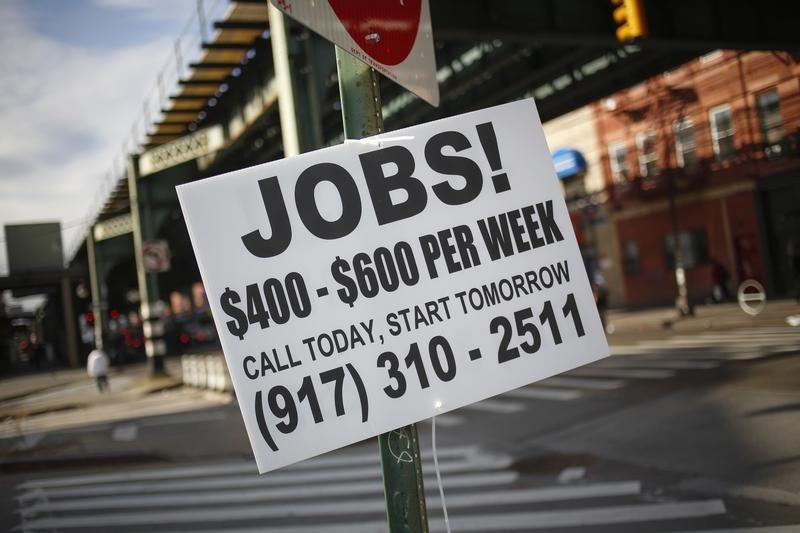By Geoffrey Smith
Investing.com -- The last batch of U.S. economic data before the Federal Reserve's latest policy meeting showed much of the economy still in surprisingly rude health, casting doubt over the ability of the central bank to moderate the pace of its monetary tightening.
The Labor Department's monthly survey of Job Openings and Labor Turnover showed a sharp rebound in vacancies in September, after an August drop that many thought would herald a broader slowdown. Vacancies rose by nearly half a million to 10.717 million from an August figure that itself revised up to 10.280 million. They remain in a downward trend stretching back to the first quarter of the year, even so.
At the same time, a closely-watched gauge of business activity also turned out a little stronger than expected. The Institute for Supply Management's manufacturing purchasing managers index fell to 50.2 from 50.9 - slightly higher than consensus forecasts for 50, the level that typically divides expansion from contraction.
The stronger-than-expected numbers dented hopes that the Fed will signal an early end to interest rate hikes when it announces the results of its latest meeting on Wednesday. The dollar rose nearly 0.5% on the news to stand at 111.145, down only 0.2% on the day. The yield on the benchmark 2-year Treasury note, which is sensitive to expectations for Fed interest rates, reversed its downward drift, rising 10 basis points to 4.51%, unchanged on the day.
However, analysts warned that the headline vacancies number may be misleading, and focused instead on the steady decline in the number of people quitting their job. This fell in September fell to 4.06 million, its lowest since the second quarter of last year, although it's still nearly 18% above its level immediately prior to the pandemic, according to Glassdoor chief economist Daniel Zhao.
Skanda Amarnath, executive director at Employ America, argued that "Quits are the signal amidst the job openings noise," and pointed out that they have now retraced some two-thirds of the gains they made during the pandemic.
The quit rate is also important for its influence on wage growth, with most data showing that those who leave for another job typically get a much bigger pay raise than those who stay where they are. Falling quits thus represent weakening wage inflation pressure.
The JOLTS survey is the first of a handful of big numbers from the labor market due this week. It's also the most backward-looking, covering only the period through September. The ADP and government labor market reports on Wednesday and Friday by contrast will cover the month through mid-October while jobless claims data due on Thursday will be even fresher.
The biggest increases in vacancies were in the hotel and restaurant trade, and in health and social care. These two categories accounted for over half of the total increase. On the negative side, wholesale openings fell by over 100,000, and those in finance and insurance also fell by over 80,000.
